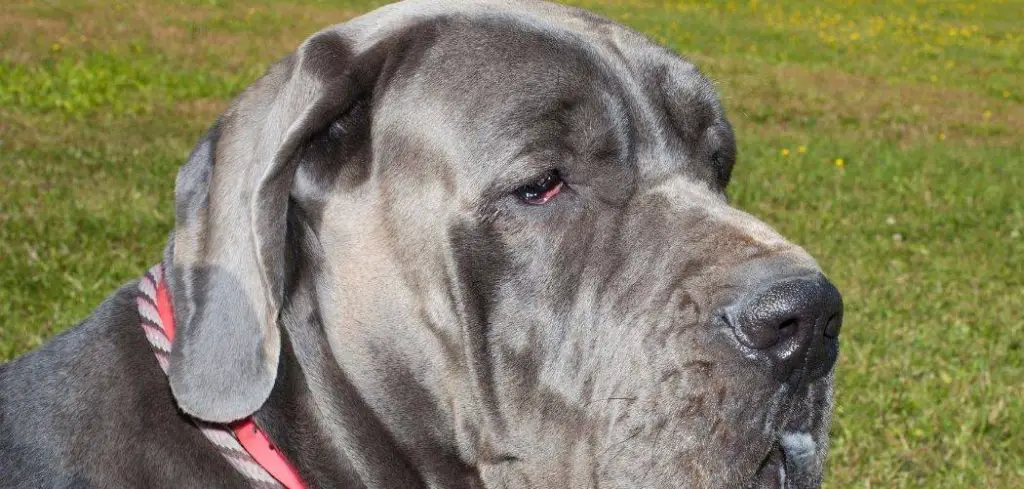Increased panting paired with excessive water intake in dogs can be worrying, as it may signal underlying health issues.
While panting and thirst are normal in certain situations, persistent or sudden changes could indicate something more serious.
We outline the common causes of increased panting and drinking in dogs, what you can do at home, and when to seek veterinary help.
Table of Contents
Dog Panting More and Drinking More Water — Why It Happens
When a dog pants excessively and drinks more water than usual, it can be a sign of overheating, dehydration, or stress. However, these symptoms together may also indicate underlying health issues such as diabetes, Cushing’s disease, kidney problems, or certain hormonal imbalances.

Dog Panting More and Drinking More Water: Common Causes
Heat and Overheating
Heat and overheating are among the most common reasons dogs pant more and drink more water. Dogs cool themselves primarily through panting, and excessive panting is often a sign that your dog is trying to regulate body temperature.
In hot weather or after vigorous exercise, you may notice bright red gums, drooling, restlessness, or seeking cooler surfaces.
While occasional panting and thirst are normal, prolonged episodes can escalate into heatstroke, which requires immediate veterinary attention.
Read more: Old Dog Excessive Panting and Thirst (Senior dog health considerations)
Diabetes Mellitus
Diabetes is a significant cause of both increased panting and water intake in dogs. High blood sugar can cause dehydration, leading dogs to drink more and pant excessively as their bodies attempt to cope.
Other signs include frequent urination, weight loss despite a normal appetite, and lethargy. Diabetes requires careful veterinary diagnosis and management, often including insulin therapy, dietary changes, and monitoring.
Kidney Disease
Kidney problems can trigger excessive drinking and panting. Impaired kidney function leads to toxin buildup, dehydration, and electrolyte imbalances.
Dogs may drink more water to compensate for fluid loss and pant as a stress or discomfort response.
Symptoms may include vomiting, reduced appetite, lethargy, and changes in urination. Early detection and treatment are essential to prevent further kidney damage.
Cushing’s Disease
Cushing’s disease, or hyperadrenocorticism, often causes increased thirst and panting. This condition arises from overproduction of cortisol, affecting multiple body systems. Dogs may also show increased urination, a pot-bellied appearance, thinning hair, and skin changes.
Because Cushing’s can impact heart, kidney, and immune function, veterinary evaluation and treatment are critical for maintaining your dog’s health.
Heart Disease
Heart problems can contribute to increased panting and water consumption. Conditions such as congestive heart failure or cardiomyopathy can reduce oxygen delivery and increase respiratory effort, leading to panting.
You may also notice coughing, fatigue, exercise intolerance, or fluid accumulation in the abdomen and chest. Timely veterinary assessment is vital to manage symptoms and prevent progression.
Pain or Stress
Pain and stress can exacerbate panting and increase water intake. Dogs experiencing chronic pain from arthritis, injury, or dental issues may pant excessively as a coping mechanism. Anxiety and environmental stressors can also trigger similar responses.
Other signs include restlessness, whining, pacing, or reluctance to lie down. Addressing pain or stress through veterinary care and supportive measures can significantly improve your dog’s comfort.
Medications and Endocrine Disorders
Certain medications or hormonal imbalances can cause increased panting and thirst. Drugs that influence heart rate, metabolism, or fluid balance may have panting and polydipsia (excessive drinking) as side effects.
Hormonal disorders, including thyroid dysfunction, can also lead to these symptoms.
Observing your dog for other signs, such as behavioral changes, vomiting, or lethargy, and informing your vet about medications is essential for accurate diagnosis and treatment.
What to Do If Your Dog Is Panting More and Drinking More Water
Ensure your dog has access to clean, fresh water at all times to prevent dehydration. Avoid extreme heat and provide shaded, cool resting areas.
Monitor and record episodes of panting and drinking. Note the frequency, duration, and any accompanying signs such as vomiting, lethargy, or changes in appetite. This information helps your vet pinpoint potential causes.
Maintain a calm environment. Reduce stressors like loud noises, overcrowding, or sudden routine changes that may trigger anxiety-driven panting.
Check for signs of pain or discomfort. Supportive bedding, gentle massage, and limiting excessive activity can reduce stress-related panting.
Consult a veterinarian if panting and thirst persist or are accompanied by other concerning symptoms. Early diagnosis allows for more effective treatment of underlying conditions.
When to Call or Visit Your Vet
Immediate veterinary care is warranted if your dog exhibits:
Persistent panting at rest or sudden increases in water intake
Vomiting, diarrhea, or sudden appetite loss
Lethargy, weakness, or behavioral changes
Coughing, rapid heartbeat, or labored breathing
Seizures, tremors, or collapse
Prompt evaluation helps identify serious conditions such as diabetes, kidney disease, heart disease, or hormonal imbalances before complications develop.
Read more: Dog panting and diarrhea (Causes explained)
Key Takeaway
Panting more and drinking more water can be a normal response to heat or activity but may also indicate serious medical conditions such as diabetes, kidney disease, heart problems, Cushing’s disease, pain, or stress.
Monitoring your dog, providing a safe and cool environment, and seeking veterinary evaluation when symptoms persist are crucial steps to ensure your dog’s health and well-being.
